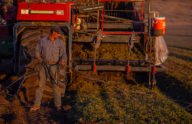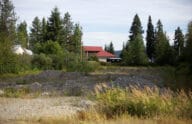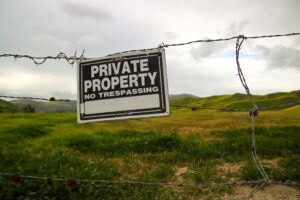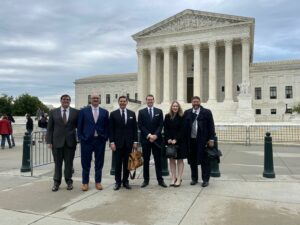Private property owners play a big role in environmental conservation
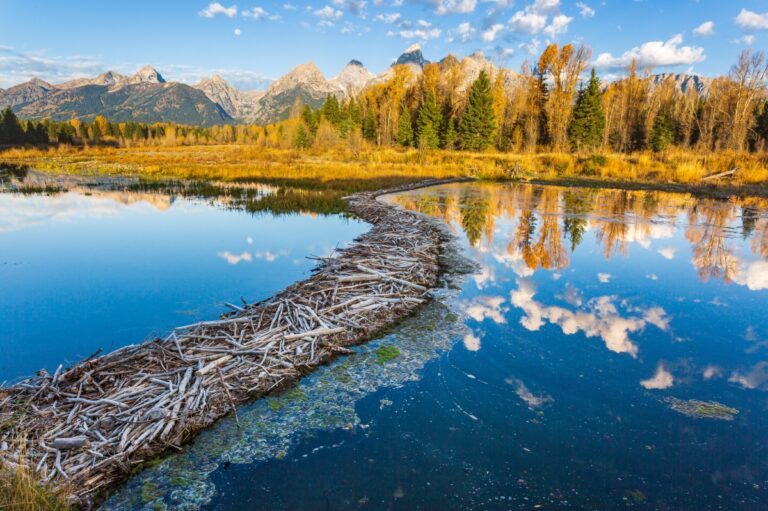
Private entities pose a constant threat to the conservation of the environment…or so some might have you believe.
This myth has become so powerful that stories of private property owners contributing to conservation—absent the force of government—are often dismissed as propaganda pushed by big corporations and evil capitalists.
But anyone who is genuinely concerned about the well-being of our environment should recognize that private property owners play a vital role in conservation, stepping up to do what the government cannot.
Governments, both federal and local, are not accustomed to the kind of out-of-the-box thinking needed to attack pressing environmental issues; the very nature of our bureaucracy doesn’t allow it.
In true form, governments tend to rely on the same, often ineffective, strategies they always have, targeting private property owners instead of working with them to create meaningful solutions.
This hasn’t stopped private entities from using their own resources to create innovative smaller-scale solutions that have large-scale results.
If the government regarded private property owners as potential partners in environmental conservation instead of treating them as the enemy, the environment would be far better off—as the below story illustrates.
Frankly, my dear, the government doesn’t give a dam
Colby Marshall is a livestock manager in Oregon, right near the Idaho border. With only 10 inches of rain a year, there are a series of complications—droughts, fires, and others—that make ranching a challenge.
But these hardships have incentivized Colby and other ranchers to seek solutions.
“Frontier Oregon,” as Colby calls it, used to be ideal for ranching, thanks to a large beaver population.
The Property and Environment Research Center (PERC), which focuses on creating innovative conservation solutions through markets and incentives, highlighted this situation.
“When beavers populated the West, their ubiquitous dams backed up water, and their ponds gradually filled with sediment. Over time, the accumulated silt became meadows, and water slowly passed through the silty sediment on its way through the valley,” explained PERC’s Martin Doyle.
With the dams, meadows, and ponds all working to keep the water tables high, the springs provided enough water to last until the end of summer and even into the fall.
In the 19th century, expert trappers significantly reduced the beaver population. As the beavers disappeared, so did their dams. And without the dams, the water tables began to fall and the meadows and ponds that helped sustain the streams were not filled enough to last the entire year.
Colby, along with fellow ranchers Scott and Sandy Campbell, was on a mission to restore the meadows and ponds to their pre-trapper glory and revitalize the ecosystems that were native to “Frontier Oregon.”
The most obvious solution would have been to bring the beavers back, but the area did not have the vegetation needed to make that a realistic option.
Instead, the Campbells took on the role of the beavers, creating artificial dams on their own land. The results were even more successful than they had hoped. Not only did ranching conditions significantly improve, but the now-flourishing meadows served as a firebreak, protecting land from the threat of fires. The artificial dams also helped restore the native grasses that long since had disappeared from the area, as well as restore the native fish and bird populations.
Nature was healing. And other ranchers in the surrounding area were benefiting from the influx of water.
The Campbells’ success was possible only because they conducted the experiment on their own land, where they happened to own all the water rights. Now left with more than enough water to meet their needs, they were able to help other local ranchers as well.
The Campbells didn’t contain the now-abundant water supply to their property alone; they let it pass by and make its way downstream, where other ranchers had access to it as well.
This hardly paints the Campbells as selfish property owners who are looking out only for themselves and their own land. On the contrary: By making use of their right to own and control their own private property, they were able to do what needed to be done to help not only themselves, but others as well.
Everyone was a winner in this situation…until the government stepped in.
Water is heavily regulated in the United States. But the Campbells never had to worry about dealing with any federal agencies like the EPA, because their project didn’t meet the Clean Water Act’s criteria for “wetlands.”
That didn’t stop the local government from demanding permits.
This is where the story takes an absurd turn.
Local laws demand permits only to work on perennial streams. Prior to the restoration, the stream was intermittent, and not subject to regulations. It was only after the Campbells’ successful experiment that it counted as perennial.
This meant that the Campbells needed to acquire a permit only if and after the experiment was successful. But they didn’t need one before the experiment occurred, or if it was unsuccessful.
With the water supply now restored and the stream now perennial, the Campbells were forced to pay fines and get permits for work they had done before they had restored the stream. Essentially, they were being punished for doing the conservation work the government wasn’t doing.
These regulations have put a damper on their work, but it hasn’t stopped it altogether. The couple still does what they can despite the government regulations.
As Doyle explains, “The more long-term damaging effect of permitting hell is how it undermines experimentation of management at the individual level. The cruel reality for any regulator—from federal to local—is that there is no one best approach to managing land, streams, and forests.”
Indeed, it takes solutions of all shapes and sizes to do the work necessary to protect the environment.
The Campbells were punished, for doing what they have the constitutional right to do: utilize their property as they see fit.
Governments should get out of the way and let landowners exercise their constitutional private property rights. In working with private entities, the possibilities for sustainability would be endless.
And if the governments want any tips on the kind of work that can be done, PERC is an excellent place to start. And if private property owners find their property rights threatened by government, Pacific Legal Foundation is here to help.


